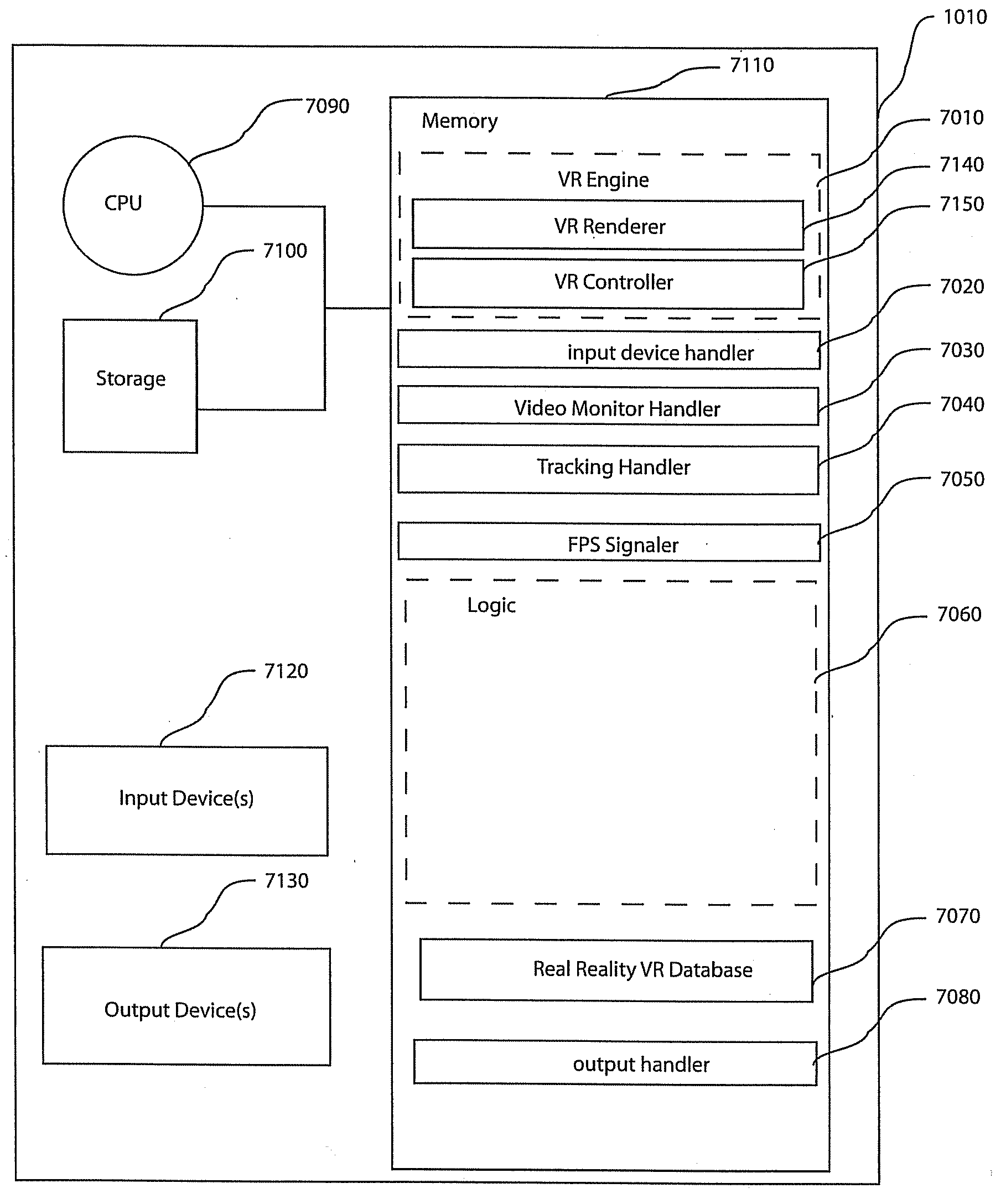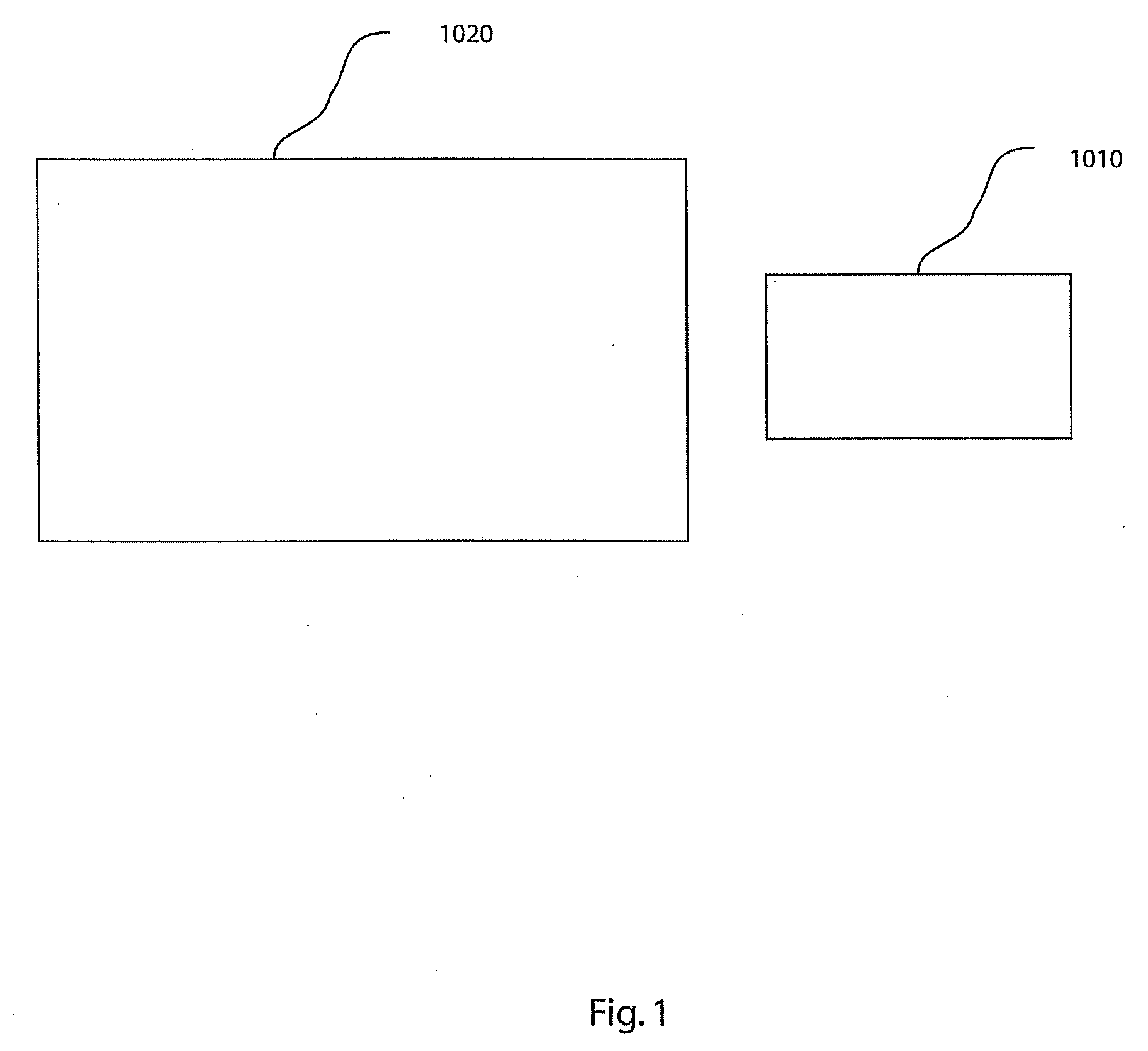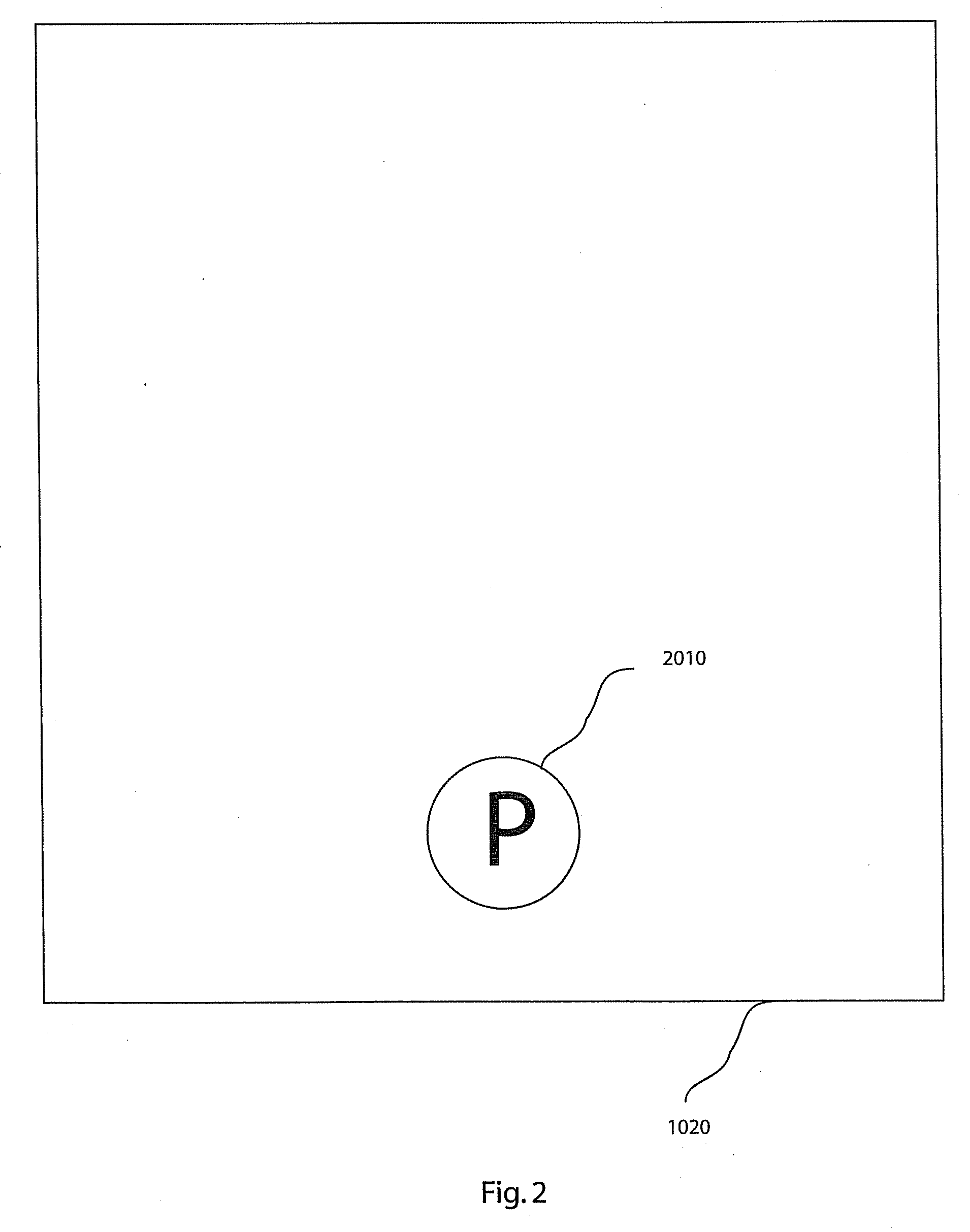System and method of enhanced virtual reality
a virtual reality and enhanced technology, applied in the field of virtual reality, can solve the problems of users becoming disoriented, dizzy or nauseous in this virtual world, simply having perspective is not enough to simulate reality, and achieve the effect of reducing nausea and dizziness
- Summary
- Abstract
- Description
- Claims
- Application Information
AI Technical Summary
Benefits of technology
Problems solved by technology
Method used
Image
Examples
Embodiment Construction
[0026]Turning now to the drawings in greater detail, it will be seen that in FIG. 1 there is an exemplary topology comprising two portions; a known environment 1020, and a system 1010. It is readily appreciated that this topology can be made more modularized. In this exemplary embodiment, the known environment 1020 is a room of a solid, uniform color. It will appreciated that the known environment 1020 is not limited to a solid uniform color room, rather other methods for removing a known environment from video are known and may be applicable.
[0027]Turning also to FIGS. 2-5, there are examples shown of any number of objects 3010 (FIG. 3) and / or users (or people) 2010 to be placed in the known environment 1020. A user 2010 (FIG. 5) is described as having a head 5010, a body 5020, and optionally at least one device 5030, which can manipulate the system 1010 by generating an input. One input device 5030 may be as simple as a joystick, but is not limited to such as such input devices ar...
PUM
 Login to View More
Login to View More Abstract
Description
Claims
Application Information
 Login to View More
Login to View More - R&D
- Intellectual Property
- Life Sciences
- Materials
- Tech Scout
- Unparalleled Data Quality
- Higher Quality Content
- 60% Fewer Hallucinations
Browse by: Latest US Patents, China's latest patents, Technical Efficacy Thesaurus, Application Domain, Technology Topic, Popular Technical Reports.
© 2025 PatSnap. All rights reserved.Legal|Privacy policy|Modern Slavery Act Transparency Statement|Sitemap|About US| Contact US: help@patsnap.com



